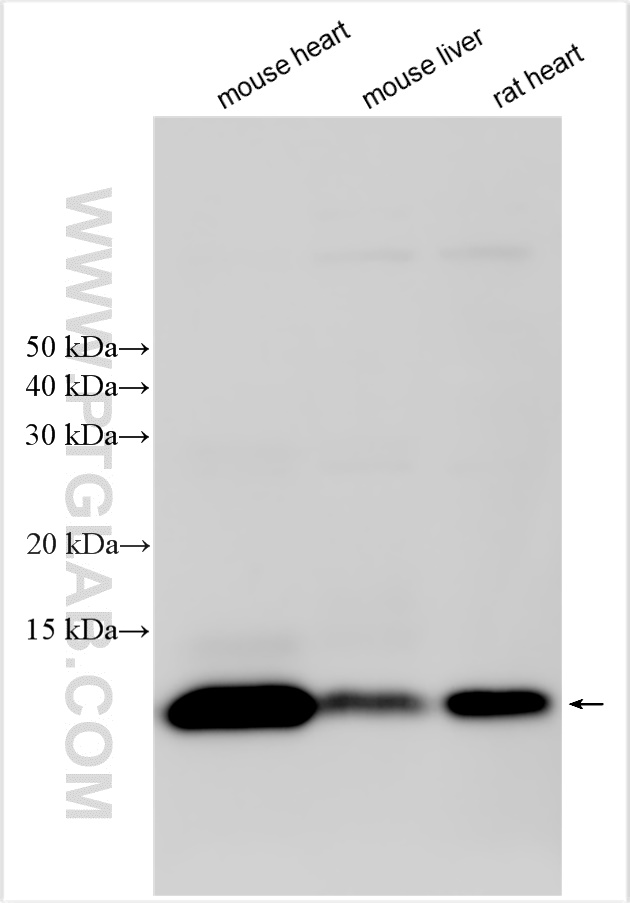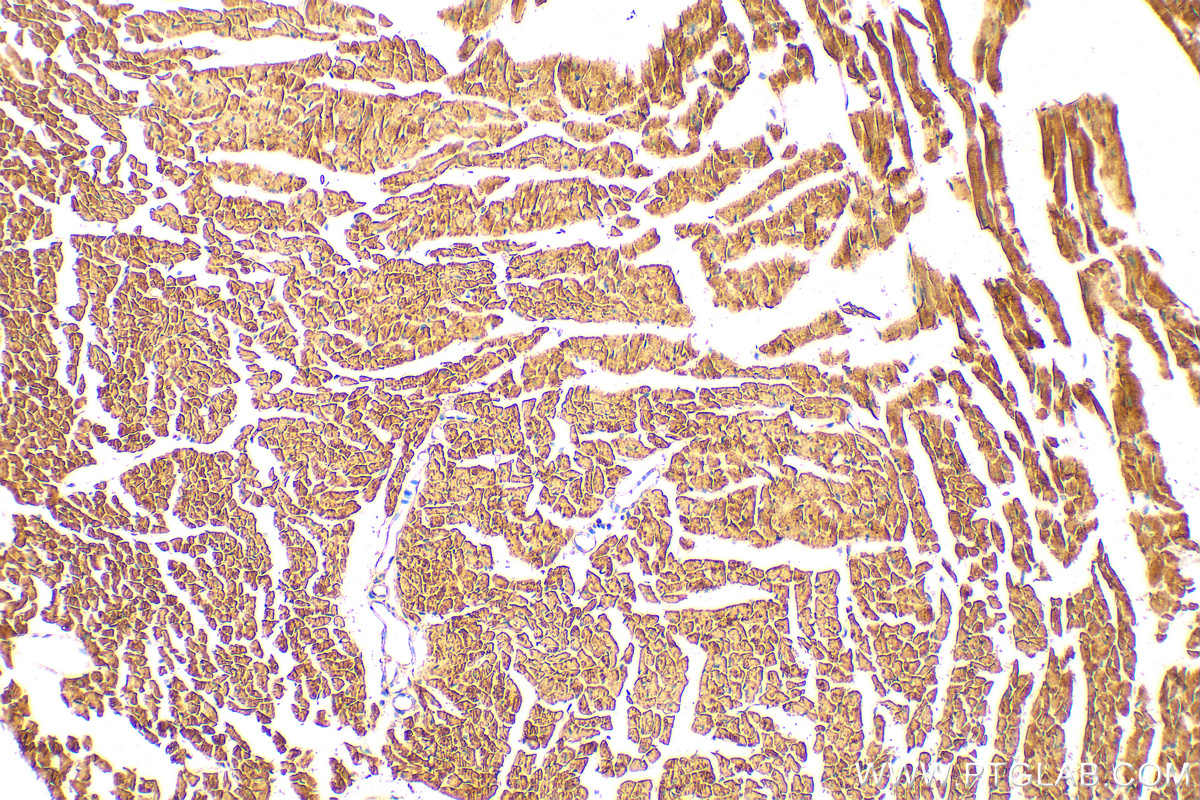验证数据展示
经过测试的应用
| Positive WB detected in | mouse heart tissue, mouse liver tissue, rat heart tissue |
| Positive IHC detected in | mouse heart tissue Note: suggested antigen retrieval with TE buffer pH 9.0; (*) Alternatively, antigen retrieval may be performed with citrate buffer pH 6.0 |
推荐稀释比
| 应用 | 推荐稀释比 |
|---|---|
| Western Blot (WB) | WB : 1:1000-1:4000 |
| Immunohistochemistry (IHC) | IHC : 1:250-1:1000 |
| It is recommended that this reagent should be titrated in each testing system to obtain optimal results. | |
| Sample-dependent, Check data in validation data gallery. | |
产品信息
15889-1-AP targets NDUFA2 in WB, IHC, ELISA applications and shows reactivity with human, mouse, rat samples.
| 经测试应用 | WB, IHC, ELISA Application Description |
| 经测试反应性 | human, mouse, rat |
| 免疫原 | NDUFA2 fusion protein Ag8675 种属同源性预测 |
| 宿主/亚型 | Rabbit / IgG |
| 抗体类别 | Polyclonal |
| 产品类型 | Antibody |
| 全称 | NADH dehydrogenase (ubiquinone) 1 alpha subcomplex, 2, 8kDa |
| 别名 | B8, CI B8, Complex I B8, NDUFA2 |
| 计算分子量 | 99 aa, 11 kDa |
| 观测分子量 | 11 kDa |
| GenBank蛋白编号 | BC003674 |
| 基因名称 | NDUFA2 |
| Gene ID (NCBI) | 4695 |
| RRID | AB_3669223 |
| 偶联类型 | Unconjugated |
| 形式 | Liquid |
| 纯化方式 | Antigen affinity purification |
| UNIPROT ID | O43678 |
| 储存缓冲液 | PBS with 0.02% sodium azide and 50% glycerol , pH 7.3 |
| 储存条件 | Store at -20°C. Stable for one year after shipment. Aliquoting is unnecessary for -20oC storage. |
背景介绍
NDUFA2(NADH dehydrogenase [ubiquinone] 1 alpha subcomplex subunit 2), also known as NADH ubiquinone oxidoreductase B8 subunit, is one of accessory subunits of the mitochondrial membrane respiratory chain NADH dehydrogenase (Complex I). NDUFS2 is vital for growth, ROS generation, membrane integrity, apoptosis, and mitochondrial energetics.
实验方案
| Product Specific Protocols | |
|---|---|
| WB protocol for NDUFA2 antibody 15889-1-AP | Download protocol |
| IHC protocol for NDUFA2 antibody 15889-1-AP | Download protocol |
| Standard Protocols | |
|---|---|
| Click here to view our Standard Protocols |


